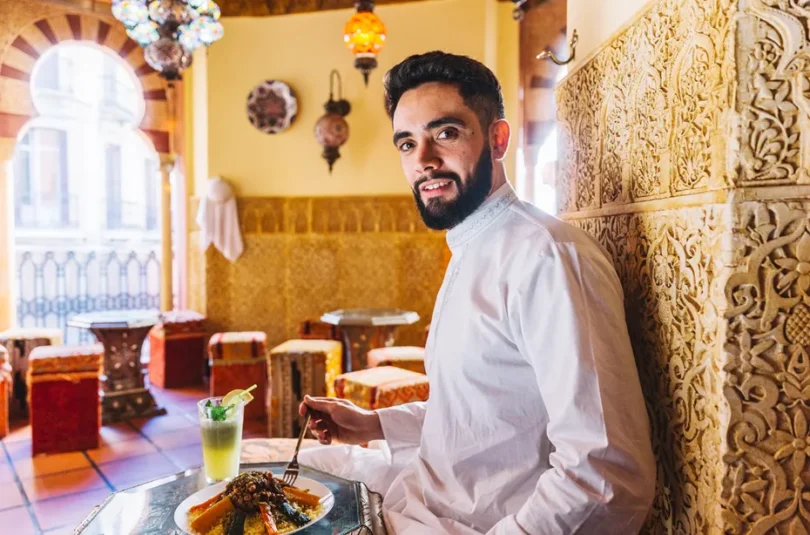Introduction – Where Light Meets Taste
In Morocco, light is never background. It tells time, sets tone, and defines the feeling of a meal. Morning light glances off mint leaves in the souk, noon light flattens the streets into silence, and by dusk the first lanterns signal welcome. Dining follows this rhythm. The table becomes not only a place for flavor but a stage for light’s transformation.
The Architecture of Glow
Traditional Moroccan interiors are built to choreograph sunlight. Lattice windows, narrow courtyards, and carved stucco guide brightness rather than block it. At midday, light enters as geometry, drawing shifting patterns on walls and floors. In the evening, candles and small lanterns take over, softening contrast and turning conversation into quiet music.
In refined restaurants and riads, this choreography continues through design that respects shadow. Instead of uniform brightness, light is allowed to pool and fade, echoing the rhythm of the desert and the sea.
Light as Ingredient
Modern gastronomy understands that the eye tastes first. In Morocco, this idea predates electricity. Warm amber tones enhance the depth of saffron, gold, and honey; cooler light sharpens greens and whites. The right illumination can make olive oil glimmer like glass or render a tagine’s glaze luminous.
Chefs and hosts use reflection as carefully as seasoning. Brass trays and glass teapots catch flickers from nearby flames, adding quiet motion to the meal. Light becomes the final garnish, invisible yet essential.
The Psychology of Ambience
Studies show that low, warm light encourages calm and trust, while harsh brightness shortens a meal. Moroccan dining has practiced this psychology for centuries. The gentle glow of lanterns invites conversation; the distance between shadow and shine defines intimacy.
Guests remember not only the taste of food but the temperature of light around it — the feeling of time slowing as colors deepen, voices soften, and the city outside grows still.
Crafting the Experience
The craft of Moroccan lighting is its own language. Brass lanterns with tiny perforations scatter constellations across plaster walls. Colored glass filters brightness into ochre, turquoise, and rose. In luxury spaces, designers now reinterpret these traditions through minimal lines and hidden fixtures, but the principle remains: light should breathe.
Even modern LEDs are tinted to echo candle warmth. The goal is not spectacle but atmosphere — to guide emotion without commanding attention.
Evening Rituals
Across Morocco, night dining marks transition. In Marrakech courtyards, tables glow under iron lamps. In Essaouira, seafood is eaten by the shimmer of salt air and flame. During Ramadan, the first meal after sunset carries a sacred rhythm: lanterns lit, tea poured, the return of brightness symbolizing generosity and renewal.
In every setting, light mediates between public and private, turning the act of eating into something ceremonial.
Conclusion – Light as Memory
When a meal ends, what lingers is not only taste but tone. The reflection on metal, the shadow of a glass, the moment when candlelight touched a spoon — all become part of the memory of flavor.
Moroccan dining teaches that refinement is not found in excess or silence, but in the glow that connects people around a table. Light gives flavor its emotion and time its pause. To design with light is to design how a moment will be remembered.


Leave a Reply